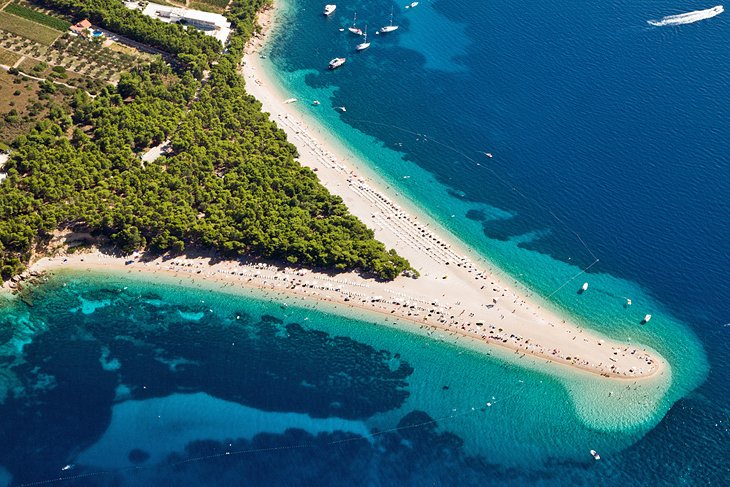
Croatia attractions and split airport transfers
Croatia attractions? The amphitheater in Pula is the sixth largest surviving Roman arena and one of the best preserved Roman monuments in Croatia. The Pula Arena was built around the 1st century AD and could seat over 26,000 spectators. In the 15th century many stones were taken from the amphitheater to build houses and other structures around Pula, but fortunately this practice was stopped before the whole structure was destroyed. Today it is a popular Croatia attraction and used to host a variety of festivals and performances during the summer months.
Encompassing 95 square km of the Velebit mountain range, the Paklenica National Park boasts some of the most dramatic mountain views in Croatia. There are plenty of excellent opportunities for hiking, rock climbing, and cycling here, and visitors might even be lucky enough to spot animals like eagles, bears, lynx, and chamois. The park is also home to two stunning gorges: The 14-km-long Velika Paklenica and the 12-km-long Mala Paklenica. Several basic lodges are available for anyone wishing to spend the night in the park, and there is also a campsite that is open from March to November.
Zadar’s car-free Old Town is built on a small peninsula jutting out onto Croatia’s Dalmatian coast. Said to be the country’s oldest continually inhabited city-it can trace its roots back as far as the Stone Age-its top tourist attractions are its many fine Romanesque churches, most of them built between the 9th and 13th centuries and filled with superbly preserved religious paintings and ornate golden treasures. Be sure to check out the 9th-century pre-Romanesque Church of St. Donatus; the 11th-century Church of St. Mary; and the Cathedral of Anastasia and the Church of St. Chrysogonus, both from the 12th century. Other things to do include visiting the Museum of Ancient Glass, as well as two popular modern installations, the Sea Organ and the Greeting to the Sun, both on the seafront close to the tip of the peninsula. Read even more information on taxi Makarska.
Fanning out right into the boundless blue waters of the Adriatic Sea, the walled city of Dubrovnik is something that can be termed as nothing less than ‘Awe-Inspiring.’ Enjoying the elevated status of UNESCO World Heritage Site, Dubrovnik, by default, becomes an outstanding destination in the uncharted waters of Croatia travel for a casual tourist. For the adrenaline addicts, activities like kayaking, swimming, and a host of other water activities add to the thrill. And for the fans of Game of Thrones, Dubrovnik’s fortifications create some deja vu. A sweeping view of the city can be enjoyed by climbing up Mount Srd, which remains effortlessly accessible via cable car or on foot.
Toochepin is a two-day rock festival that takes in August each year in Tucepi. Check their website for concert details. A half marathon starting and ending in Omis and heading out through part of the Cetina River canyon takes place each year at the end of September. Makarska is not a clubbing capital, but as the largest settlement between Split and Dubrovnik, it has more options than most. Young people from neighbouring villages often beeline here on weekend nights. Peter Pan is popular with locals, but the Balkan turbo-folk music might begin to grate. The best option is Deep Makarska, situated inside a cave. They take full advantage of the setting, illuminating the cave with atmospheric lighting. It also offers a splendid view. See extra info at https://www.cheapridetransfers.com/.